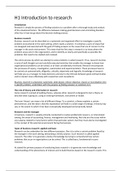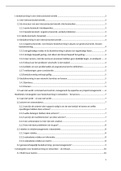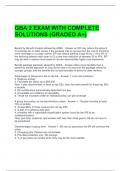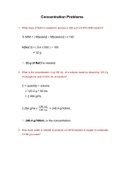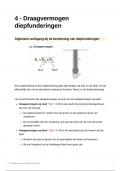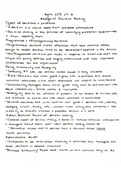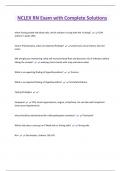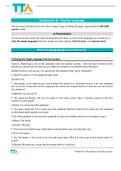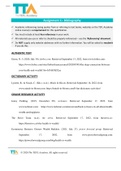H1 Introduction to research
Introduction
Research is simply the process of finding solutions to a problem after a thorough study and analysis
of the situational factors. The difference between making good decisions and committing blunders
often lies in how we go about the decision-making process.
Business research
Business research can be described as a systematic and organized effort to investigate a specific
problem encountered in the work setting, which needs a solution. It comprises a serie of steps that
are designed and executed with the goal of finding answers to the issues that are of concern to the
manager in the work environment. This mean that the first step in research is to know where the
problem areas exist in the organization, and to identify as clearly and specifically as possible the
problems that need to be studied and resolved.
The entire process by which we attempt to solve problems is called research. Thus, research involves
a serie of well-thought-out and carefully executed activities that enable the manager to know how
organizational problems can be solved, or at least considerably minimized. Research encompasses
the processes of inquiry, investigation, examination and experimentation. These processes have to
be carried out systematically, diligently, critically, objectively and logically. Knowledge of research
will help you as a manager to make decisions and also to discriminate between good and bad studies
and to interact more effectively with researchers and consultants.
Business research is organized, systematic, data-based, critical, objective, inquiry or investigation into
a specific problem, undertaken with the purpose of finding answers or solutions to it.
The role of theory and information in research
Some research is aimed at building theory, whereas other research is designed to test a theory or
describe what is going on, using an existing framework, instrument or model.
The term 'theory' can mean a lot of different things. To a scientist, a theory explains a certain
phenomenon, and the idea is that this explanation will hold in a wide range of settings. A theory may
vary in the extent to which it has been conceptually developed and empirically tested.
Research and the manager
In business, research is usually primarily conducted to resolve problematic issues in, or interrelated
among, the areas of accounting, finance, management and marketing. Not only are the issues within
any subarea related to many factors within that particular system, but they must also be investigated
in the context of the external environment facing the business.
Types of business research: applied and basic
Research can be undertaken for two different purposes. One is to solve a current problem faced by
the manager in the work setting, demanding a timely solution. Such research is called applied
research. The other is to generate a body of knowledge by trying to comprehend how certain
problems that occur in organizations can be solved. This is called basic, fundamental or pure
research.
As stated the primary purpose of conducting basic research is to generate more knowledge and
understanding of the phenomena of interest and to build theories based on the research results. This
,process of building on existing knowledge is the genesis for theory building, particularly in the
management area.
The main distinction between applied and basic business research is that the former is specifically
aimed at solving a currently experienced problem within a specific organization, whereas the latter
has the broader objective of generating knowledge and understanding of phenomena and problems
that occur in various organizational settings. Despite this distinction, both types of research may
benefit from following the same steps of systematic inquiry to arrive at solutions to problems. For
this reason, both basic and applied research are often carried out in a scientific manner so that the
findings or results generated by them can be relied upon to effectively solve the problem
investigated.
Managers and research
Although minor problems can be fixed by the manager, major problems warrant the hiring of outside
researchers or consultants.
Being knowledgeable about research and research methods helps professional managers to:
• Identify and effectively solve minor problems in the work setting.
• Know how to discriminate good from bad research
• Appreciate and be constantly aware of the multiple influences and multiple effects of factors
impinging on a situation.
• Take calculated risks in decision making, knowing full well the probabilities associated with the
different outcomes.
• Prevent possible vested interests from exercising their influence in a situation.
• Relate to hired researchers and consultants more effectively.
• Combine experience with scientific knowledge while making decisions.
The manager and the consultant - researcher
It is important to be knowledgeable about how to effectively interact with the consultant, what the
manager-researcher relationship should be, and the advantages and disadvantages of internal versus
external consultants. A manager should also make clear to the consultants which files can be used
and which can't. Beyond specifying the roles and constraints, the manager should also make sure
that there is congruence in the value systems of management and the consultants.
The manager should make sure that:
• The role and expectations of both parties are made explicit.
• Relevant philosophies and value systems of the organization are clearly stated and constraints,
if any, are communicated.
• A good rapport is established with the researchers, and between the researchers and the
employees in the organization, enabling the full cooperation of the latter.
Internal versus external consultants/researchers
Some organizations have their own consulting or research department, which might be called the
Management Services Department, the Organization and Methods Department, R&D or some other
name. This department serves as the internal consultant to subunits of the organization that face
certain problems and seek help. The manager often has to decide whether to use internal or external
researchers.
Advantages of internal consultants/researchers
• The internal team stands a better chance of being readily accepted by the employees in the
subunit of the organization where research needs to be done.
, • The team requires much less time to understand the structure, the philosophy and climate,
and the functioning and work systems of the organization.
• They are available to implement their recommendations after the research findings have been
accepted. They are also available to evaluate the effectiveness of the changes, and to consider
further changes if and when necessary.
• The internal team might cost considerably less than an external team for the department
enlisting help in problem solving, because they will need less time to understand the system
due to their continuous involvement with various units of the organization. For problems of
low complexity, the internal team would be ideal.
Disadvantages of internal consultants/researchers
• In view of their long tenure as internal consultants, the internal team may quite possibly fall
into a stereotyped way of looking at the organization and its problems. This inhibits any fresh
ideas and perspectives that might be needed to correct the problem. This is definitely a
handicap for situations in which weighty issues and complex problems are to be investigated.
• There is a scope for certain powerful coalitions in the organization to influence the internal
team to conceal, distort, or mispresent certain facts. In other words, certain vested interests
could dominate, especially in securing a sizable portion of the available scant recourses.
• There is also a possibility that even the most highly qualified internal research teams are not
perceived as 'experts' by the staff and management, and hence their recommendations ma not
get the consideration and attention they deserve.
• Certain organizational biases of the internal research team might, in some instances, make the
findings less objective and consequently less scientific.
Advantages of the external team
• The external team can draw on a wealth of experience from having worked with different
types of organizations that have had the same or similar types of problems. This wide range of
experience enables them to think both divergently and convergently rather than hurry to an
instant solution on the basis of the apparent facts in the situation. Having viewed the situation
from several possible angles and perspectives (divergently), they can critically assess each of
these, discard the less viable options and alternatives, and focus on specific feasible solutions
(think convergently).
• The external teams, especially those from established research and consulting firms, might
have more knowledge of current sophisticated problem-solving models through their periodic
training programs, which the teams within the organization may not have access to. Because
knowledge obsolescence is a real threat in the consulting area, external research institutions
ensure that their members are conversant with the latest innovations through periodic
organized training programs.
Disadvantages of external consultants/researchers
• The cost of hiring an external research team is usually high and is the main deterrent, unless
the problems are critical.
• An external team takes considerable time to understand the organization being researched.
They are not readily accepted by employees.
• The external team also charges additional fees for their assistance in the implementation and
evaluation phases.
Knowledge about research and managerial effectiveness
Knowledge of research heightens the sensitivity of managers to the innumerable internal and
external factors operating in their work and organizational environment. It also helps to facilitate
effective interactions with consultants and comprehension of the nuances of the research process.
, Remaining objective, focusing on problem solutions, fully understanding the recommendations
made, and why and how they have been arrived at, make for good managerial decision making.
Remaining objective, focusing on problem solutions, fully understanding the recommendations
made, and why and how they have been arrived at, make for good managerial decision making.
Ethics and business research
Ethic in business research refers to a code of conduct or expected societal norms of behavior while
conducting research. There are business journals such as the Journal of Business Ethics and the
Business Ethics Quarterly that are mainly devoted to the issue of ethics in business. The American
Psychological Association has established certain guidelines for conducting research, to ensure that
organizational research is conducted in an ethical manner and the interests of all concerned are
safeguarded.
H2 The scientific approach and alternative
approaches to investigation
Introduction
Scientific research focuses on solving problems and pursues a step-by-step logical, organized and
rigorous method to identify the problems, gather data, analyze and draw valid conclusions from
them. Scientific investigation tends to be more objective than subjective, and helps managers to
highlight the most critical factors at the workplace that need specific attention to as to avoid,
minimize, or solve problems. Scientific investigation and managerial decision making are integral
aspects of effective problem solving.
The hallmarks of scientific research
• Purposiveness (The manager has started the research with a definite aim or purpose).
• Rigor (A good theoretical base and a sound methodological design add rigor to a purposive
study. Rigor connotes carefulness, scrupulousness, and the degree of exactitude in research
investigations).
• Testability (A scientific hypothesis must be testable)
• Replicability (Is the extent to which a re-study is made possible by the provision of the design
details of the study in the research report).
• Precision and confidence (Precision refers to the closeness of the findings to "reality" based on
a sample -> confidence interval in statistics. Confidence refers to the probability that our
estimations are correct -> also known as confidence level. 95% is conventional.)
• Objectivity (The conclusions should be objective.)
• Generalizability (Refers to the scope of applicability of the research findings in one
organizational setting to other settings)
• Parsimony (simplicity is key)
The hypothetico-deductive method
The hypothetico-deductive model, popularized by the Austrian philosopher Karl Popper, is a typical
version of the scientific method. The hypothetico-deductive method provides a useful, systematic
approach for generating knowledge to solve basic and managerial problems.
It involves the following seven steps:
• Identify a broad problem area
• Define the problem statement
Introduction
Research is simply the process of finding solutions to a problem after a thorough study and analysis
of the situational factors. The difference between making good decisions and committing blunders
often lies in how we go about the decision-making process.
Business research
Business research can be described as a systematic and organized effort to investigate a specific
problem encountered in the work setting, which needs a solution. It comprises a serie of steps that
are designed and executed with the goal of finding answers to the issues that are of concern to the
manager in the work environment. This mean that the first step in research is to know where the
problem areas exist in the organization, and to identify as clearly and specifically as possible the
problems that need to be studied and resolved.
The entire process by which we attempt to solve problems is called research. Thus, research involves
a serie of well-thought-out and carefully executed activities that enable the manager to know how
organizational problems can be solved, or at least considerably minimized. Research encompasses
the processes of inquiry, investigation, examination and experimentation. These processes have to
be carried out systematically, diligently, critically, objectively and logically. Knowledge of research
will help you as a manager to make decisions and also to discriminate between good and bad studies
and to interact more effectively with researchers and consultants.
Business research is organized, systematic, data-based, critical, objective, inquiry or investigation into
a specific problem, undertaken with the purpose of finding answers or solutions to it.
The role of theory and information in research
Some research is aimed at building theory, whereas other research is designed to test a theory or
describe what is going on, using an existing framework, instrument or model.
The term 'theory' can mean a lot of different things. To a scientist, a theory explains a certain
phenomenon, and the idea is that this explanation will hold in a wide range of settings. A theory may
vary in the extent to which it has been conceptually developed and empirically tested.
Research and the manager
In business, research is usually primarily conducted to resolve problematic issues in, or interrelated
among, the areas of accounting, finance, management and marketing. Not only are the issues within
any subarea related to many factors within that particular system, but they must also be investigated
in the context of the external environment facing the business.
Types of business research: applied and basic
Research can be undertaken for two different purposes. One is to solve a current problem faced by
the manager in the work setting, demanding a timely solution. Such research is called applied
research. The other is to generate a body of knowledge by trying to comprehend how certain
problems that occur in organizations can be solved. This is called basic, fundamental or pure
research.
As stated the primary purpose of conducting basic research is to generate more knowledge and
understanding of the phenomena of interest and to build theories based on the research results. This
,process of building on existing knowledge is the genesis for theory building, particularly in the
management area.
The main distinction between applied and basic business research is that the former is specifically
aimed at solving a currently experienced problem within a specific organization, whereas the latter
has the broader objective of generating knowledge and understanding of phenomena and problems
that occur in various organizational settings. Despite this distinction, both types of research may
benefit from following the same steps of systematic inquiry to arrive at solutions to problems. For
this reason, both basic and applied research are often carried out in a scientific manner so that the
findings or results generated by them can be relied upon to effectively solve the problem
investigated.
Managers and research
Although minor problems can be fixed by the manager, major problems warrant the hiring of outside
researchers or consultants.
Being knowledgeable about research and research methods helps professional managers to:
• Identify and effectively solve minor problems in the work setting.
• Know how to discriminate good from bad research
• Appreciate and be constantly aware of the multiple influences and multiple effects of factors
impinging on a situation.
• Take calculated risks in decision making, knowing full well the probabilities associated with the
different outcomes.
• Prevent possible vested interests from exercising their influence in a situation.
• Relate to hired researchers and consultants more effectively.
• Combine experience with scientific knowledge while making decisions.
The manager and the consultant - researcher
It is important to be knowledgeable about how to effectively interact with the consultant, what the
manager-researcher relationship should be, and the advantages and disadvantages of internal versus
external consultants. A manager should also make clear to the consultants which files can be used
and which can't. Beyond specifying the roles and constraints, the manager should also make sure
that there is congruence in the value systems of management and the consultants.
The manager should make sure that:
• The role and expectations of both parties are made explicit.
• Relevant philosophies and value systems of the organization are clearly stated and constraints,
if any, are communicated.
• A good rapport is established with the researchers, and between the researchers and the
employees in the organization, enabling the full cooperation of the latter.
Internal versus external consultants/researchers
Some organizations have their own consulting or research department, which might be called the
Management Services Department, the Organization and Methods Department, R&D or some other
name. This department serves as the internal consultant to subunits of the organization that face
certain problems and seek help. The manager often has to decide whether to use internal or external
researchers.
Advantages of internal consultants/researchers
• The internal team stands a better chance of being readily accepted by the employees in the
subunit of the organization where research needs to be done.
, • The team requires much less time to understand the structure, the philosophy and climate,
and the functioning and work systems of the organization.
• They are available to implement their recommendations after the research findings have been
accepted. They are also available to evaluate the effectiveness of the changes, and to consider
further changes if and when necessary.
• The internal team might cost considerably less than an external team for the department
enlisting help in problem solving, because they will need less time to understand the system
due to their continuous involvement with various units of the organization. For problems of
low complexity, the internal team would be ideal.
Disadvantages of internal consultants/researchers
• In view of their long tenure as internal consultants, the internal team may quite possibly fall
into a stereotyped way of looking at the organization and its problems. This inhibits any fresh
ideas and perspectives that might be needed to correct the problem. This is definitely a
handicap for situations in which weighty issues and complex problems are to be investigated.
• There is a scope for certain powerful coalitions in the organization to influence the internal
team to conceal, distort, or mispresent certain facts. In other words, certain vested interests
could dominate, especially in securing a sizable portion of the available scant recourses.
• There is also a possibility that even the most highly qualified internal research teams are not
perceived as 'experts' by the staff and management, and hence their recommendations ma not
get the consideration and attention they deserve.
• Certain organizational biases of the internal research team might, in some instances, make the
findings less objective and consequently less scientific.
Advantages of the external team
• The external team can draw on a wealth of experience from having worked with different
types of organizations that have had the same or similar types of problems. This wide range of
experience enables them to think both divergently and convergently rather than hurry to an
instant solution on the basis of the apparent facts in the situation. Having viewed the situation
from several possible angles and perspectives (divergently), they can critically assess each of
these, discard the less viable options and alternatives, and focus on specific feasible solutions
(think convergently).
• The external teams, especially those from established research and consulting firms, might
have more knowledge of current sophisticated problem-solving models through their periodic
training programs, which the teams within the organization may not have access to. Because
knowledge obsolescence is a real threat in the consulting area, external research institutions
ensure that their members are conversant with the latest innovations through periodic
organized training programs.
Disadvantages of external consultants/researchers
• The cost of hiring an external research team is usually high and is the main deterrent, unless
the problems are critical.
• An external team takes considerable time to understand the organization being researched.
They are not readily accepted by employees.
• The external team also charges additional fees for their assistance in the implementation and
evaluation phases.
Knowledge about research and managerial effectiveness
Knowledge of research heightens the sensitivity of managers to the innumerable internal and
external factors operating in their work and organizational environment. It also helps to facilitate
effective interactions with consultants and comprehension of the nuances of the research process.
, Remaining objective, focusing on problem solutions, fully understanding the recommendations
made, and why and how they have been arrived at, make for good managerial decision making.
Remaining objective, focusing on problem solutions, fully understanding the recommendations
made, and why and how they have been arrived at, make for good managerial decision making.
Ethics and business research
Ethic in business research refers to a code of conduct or expected societal norms of behavior while
conducting research. There are business journals such as the Journal of Business Ethics and the
Business Ethics Quarterly that are mainly devoted to the issue of ethics in business. The American
Psychological Association has established certain guidelines for conducting research, to ensure that
organizational research is conducted in an ethical manner and the interests of all concerned are
safeguarded.
H2 The scientific approach and alternative
approaches to investigation
Introduction
Scientific research focuses on solving problems and pursues a step-by-step logical, organized and
rigorous method to identify the problems, gather data, analyze and draw valid conclusions from
them. Scientific investigation tends to be more objective than subjective, and helps managers to
highlight the most critical factors at the workplace that need specific attention to as to avoid,
minimize, or solve problems. Scientific investigation and managerial decision making are integral
aspects of effective problem solving.
The hallmarks of scientific research
• Purposiveness (The manager has started the research with a definite aim or purpose).
• Rigor (A good theoretical base and a sound methodological design add rigor to a purposive
study. Rigor connotes carefulness, scrupulousness, and the degree of exactitude in research
investigations).
• Testability (A scientific hypothesis must be testable)
• Replicability (Is the extent to which a re-study is made possible by the provision of the design
details of the study in the research report).
• Precision and confidence (Precision refers to the closeness of the findings to "reality" based on
a sample -> confidence interval in statistics. Confidence refers to the probability that our
estimations are correct -> also known as confidence level. 95% is conventional.)
• Objectivity (The conclusions should be objective.)
• Generalizability (Refers to the scope of applicability of the research findings in one
organizational setting to other settings)
• Parsimony (simplicity is key)
The hypothetico-deductive method
The hypothetico-deductive model, popularized by the Austrian philosopher Karl Popper, is a typical
version of the scientific method. The hypothetico-deductive method provides a useful, systematic
approach for generating knowledge to solve basic and managerial problems.
It involves the following seven steps:
• Identify a broad problem area
• Define the problem statement


